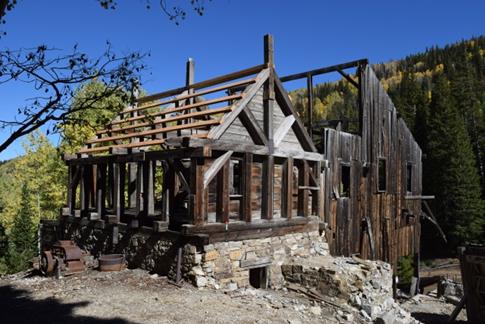
Park City Municipal Corporation Celebrates National Historic Preservation Month
Local preservation projects to be honored with annual Historic Preservation Awards
Park City, UTAH (May 15, 2017) —Park City Municipal Corporation will be honoring the annual Historic Preservation Award winners following Coffee with Council, at 5:30 p.m. on Tuesday, May 23rd at the Park City Library. This presentation coincides with National Historic Preservation Month, a nationwide initiative to bring attention to local community preservation efforts.
The awards honor excellence in preservation as determined by the Historic Preservation Board and highlights the Design Guidelines for Historic Districts and Historic Sites, by which all development in the Historic Districts is regulated. The awards are not meant to compete with the Park City Museum & Historical Society’s awards for Historic Sites, but highlight joint preservation efforts already taking place between the Museum and Park City Municipal Corporation.
The Park City Historic Preservation Board introduced the annual Historic Preservation Award in 2011 to help highlight the numerous historic preservation projects occurring in Park City’s Historic Districts and on other historic sites. Each year, the Historic Preservation Board awards an exemplary historic preservation project that complied with the City’s Historic Design Guidelines.
Awards are selected based on the following categories:
- Adaptive Reuse
- Infill Development
- Excellence in Restoration
- Sustainable Preservation
- Embodiment of Historical Context
- Connectivity of Site
The Historic Preservation Board also commissions a piece art that memorializes the project undertaken by the annual award winner(s). This collection of one-of-a-kind art pieces depicting Park City’s historic buildings and structures has created a legacy gallery that is displayed in the public hallways of the Marsac Building. This year’s commemorative art project is a wood block print, by artist Hilary Honadel, which depicts the California Comstock Mill Building, winner of the 2016 Historic Preservation Award. It will be unveiled at the May 23rd event.
As part of the five-year anniversary of this awards program, the City will also be presenting bronze plaques to award-winning preservation projects completed both in 2016 and in years past. These projects include:
2016 Award Winners:
- 264 Ontario Avenue—Excellence in Restoration
- 81 King Road—Excellence in Restoration
- 257 McHenry Avenue—Excellence in Restoration
- 1102 Norfolk Avenue—Excellence in Restoration
- California Comstock Mill Building—Embodiment of Historical Context
Past Award winners:
- 562 Main Street—Excellence in Restoration (2015 award winner)
- 343 Park Avenue—Excellence in Restoration (2015 award winner))
- 651 Park Avenue—Adaptive Reuse (2015 award winner)
- 337 Daly Avenue—Compatible Infill Development (2015 award winner)
- 101 Prospect Avenue—Excellence in Restoration (2014 award winner)
- 929 Park Avenue—Excellence in Restoration (2013 award winner)
- 515 Main Street—Excellence in Restoration (2013 award winner)
- 543 Park Avenue—Excellence in Restoration (2012 award winner)
- 703 Park Avenue—Adaptive Reuse (2011 award winner)
“The awards are a great example of the efforts Park City homeowners, architects, builders and residents put into protecting and preserving the historic charm and character of Park City,” said Mayor Jack Thomas. “And Park City’s Historic District is a vital piece of City Council’s efforts to retain our unique way of life and commitment to honoring our past.”
###
About Park City Municipal Corporation
Park City Municipal Corporation is the government seat for Park City, Utah. A former silver mining town, Park City is now home to two world-class ski resorts and was the mountain host for the 2002 Salt Lake City Olympic Winter Games. The town of 7,500 also hosts many special events, including the Sundance Film Festival and the Kimball Arts Festival. For more information, please visit www.parkcity.org.
About National Historic Preservation Month
In 1973, the National Trust for Historic Preservation designated May as National Historic Preservation Month. The national campaign is co-sponsored by local preservation groups, state and local historical societies, preservation nonprofits, business and civic groups, and municipalities. The purpose of the campaign is to instill national and community pride, promote heritage tourism, and demonstrate the social and economic benefits of historic preservation.
This year, the National Trust is celebrating with three simple words “This. Place. Matters.” As part of the national campaign, people from all over the country are encouraged to celebrate and showcase the places that hold special meaning to them and their communities.
The Utah State Historic Preservation Office—Utah Division of State History—is also promoting May as Archeology and Preservation Month. The state is celebrating with events scheduled in each of their Certified Local Government communities.
